“We make optimistic and ambitious architecture” is the mission statement of the Gró.Works practice, run by Donal Groarke and Ultan Ó Conchubhair.
The location of the practice is an architectural statement, being a three-storey over basement infill development, completed in 2022. The property is both a mews, at the end of the garden of 20 Mountpleasant Square, and a street-facing property replacing a shop at 20A Mountpleasant Avenue Lower in Ranelagh, Dublin 6.
Number 20A also fulfils three uses; the basement houses the architectural practice; at street level is the public- and client-facing element, an 8 sq m (86 sq ft) gallery and meeting room in a Crittal-made cube of eight glass panels framed in quartz-grey, powder-coated steel; and the ground, first and second floors comprise Groarke’s family home. It’s an optimistic and ambitious embodiment of living over the shop; 228 sq m (2,454 sq ft) of perfect proportions with a four-bed, four-bath A3-rated family home at its heart.
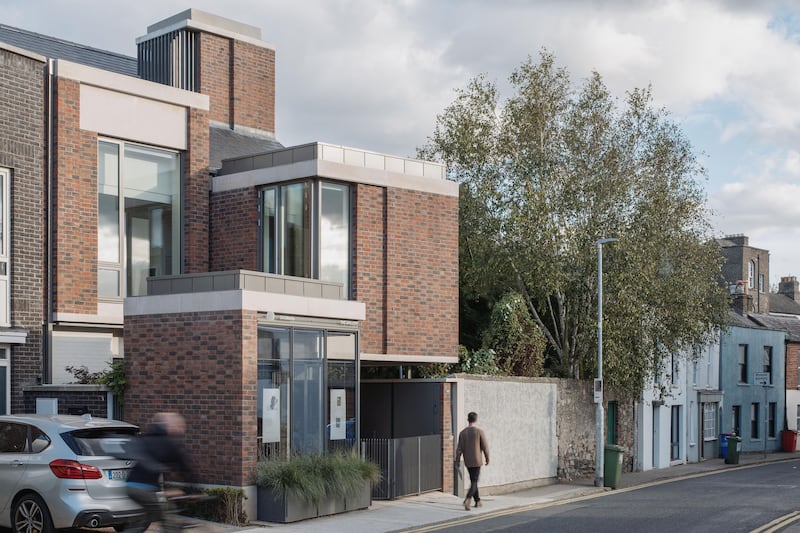
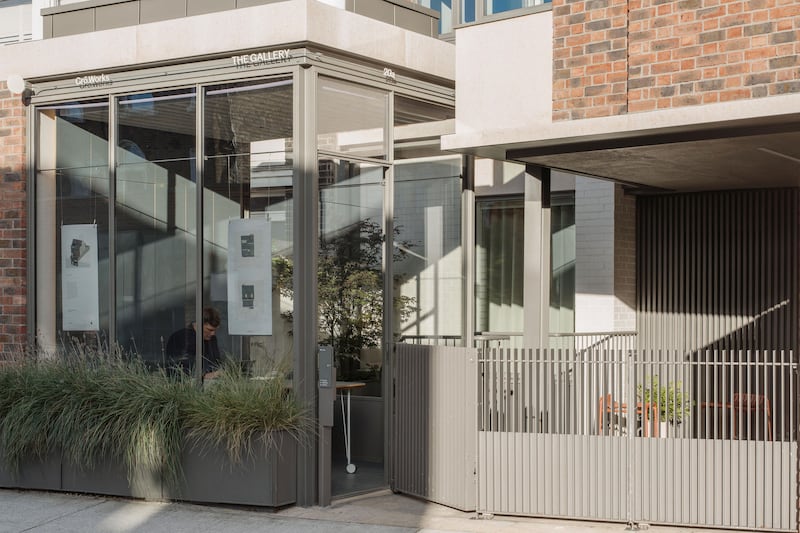
The entire project is a lesson in balance; it takes endless thought to look this effortless.
READ MORE
The gallery follows the line of the original shop, and the house steps back to the neighbours’ building line. The parapet at the north end aligns with that of the adjacent house, number 1 Rhodaville Place, and it lowers at the south end to connect with the context of the neighbouring Georgian and Victorian terraces.
The exposed ceiling beams in the gallery repeat throughout the domestic interior, and are replicated and reflected in the detailing. The void that stretches 12.5m from the ground floor to the roof is based on a Mondrian painting, with lines lining up in the stack-bonded blocks.
[ Modernised and extended former farmhouse on two acres in Straffan for €2mOpens in new window ]
Through the street gate, where a courtyard car port offers a charging point and secret storage, the front door of the house leads into what Groarke calls “a low and dark entrance”, with a guest toilet and utility to the left.
Then you move from public to private space, to the kitchen/diningroom that’s defined by the void above; the storage wall of painted panels with rich texture in the oak grain; the wide island; and the beautiful dark kitchen cabinets with integrated Fischer and Paykel appliances. These stretch along the whole wall and continue into a pantry before disappearing behind a sheet of matching sliding doors. Off this is a snug TV room with discreet storage and a stove.
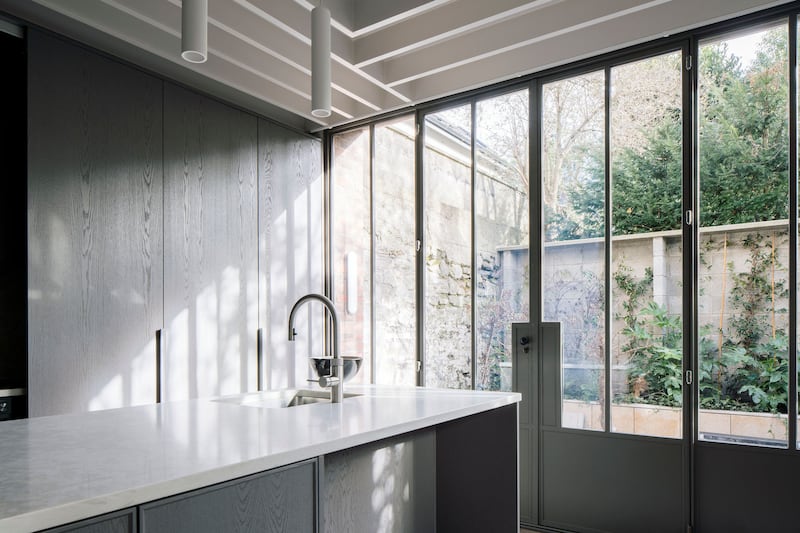
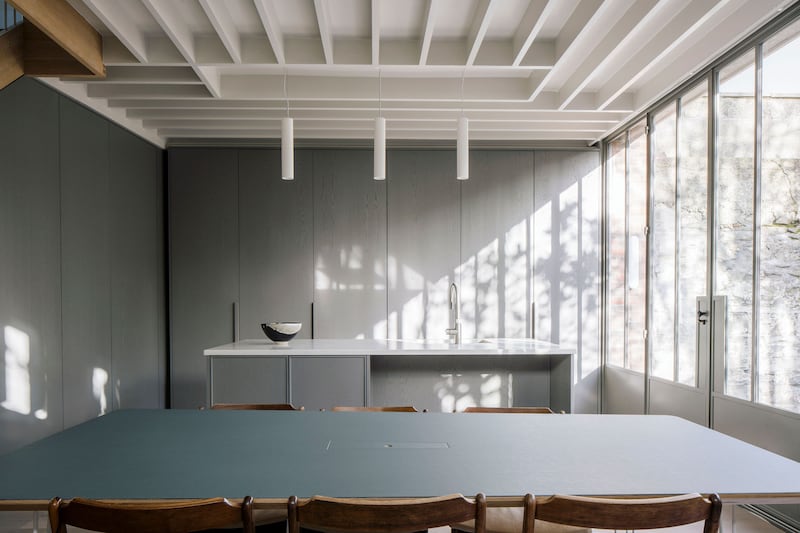
The far kitchen wall is formed of Crittal glass doors that fold out to the courtyard garden; “designed as a lung”, says Groarke.
Trees and greenery around the boundaries provide privacy and form a sound barrier, but still the easterly light streams through the inside of the house. This facade, the architect-client’s favourite, melds the finishes and fixtures used throughout the house; panels of white brick, cladding, hidden gutters and Flemish-bonded brickwork to tie into the terraces.
[ Georgian townhouse ahead of its time on Drumcondra Road for €1.15mOpens in new window ]
On the first floor, up the metal-spindled staircase with oak treads, the front windows of the main bedroom suite yielded a surprise – a view of the copper dome of Rathmines church.
“We hadn’t expected that, as we couldn’t see it from the street at this angle,” says Groarke.
In the bathroom, the vanity unit holds two basins and forms a screen behind the bath; a wide shower sits into the side, and the walk-in wardrobe is lit by the void.
The ceilings are just as tall upstairs and the huge, high, four-hinged doors are set in deep reveals, their tops lining up, across the landing, with the two double bedrooms’ shelves, wardrobes and windows (which have pull-out desks).
The main bathroom is lit by an ingenious lightwell and, as elsewhere, exudes calm from its cool, consistent palette of pale porcelain tiles, white walls, oak floors and subtle marbles.
On the second floor is a fourth bedroom, currently used as a livingroom, which opens out to a suntrap terrace with built-in seats and wooden planters. This level is like a secret retreat, with its own bright bathroom and a teeny top-lit workspace.
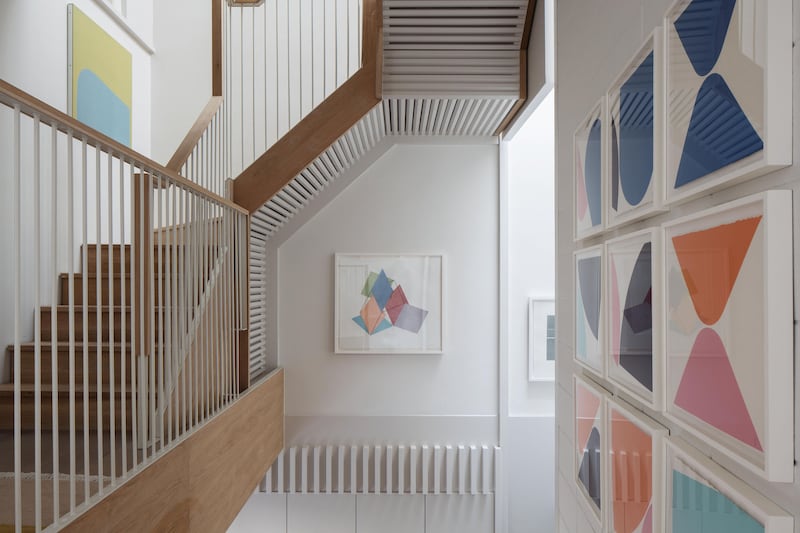
A painted stainless-steel staircase spirals from the front yard down to the basement, floored in polished concrete. Plants tumble down the boundary wall to form a hanging garden, and glass bricks in the car port bring more light into the architects’ studio. Behind this are a bathroom and a store, with windows and bifolding doors angled to borrow light.
To be both client and architect in a “self-commissioned” project brings great joy, says Groarke, along with the opportunity to “get right into the detail”, to consider the slant of the sunlight, to design a font for the streetfront, to spec out the laser-cut letterboxes, to commission your own father to make the joinery.
With parks, schools, Ranelagh village, the canal and the city centre all accessible by foot, bike, bus and Luas, there’s a very local feel to this part of the avenue, to which Groarke plans to stay close.
Number 20A is for sale through Sherry FitzGerald with an asking price of €1.675 million.











